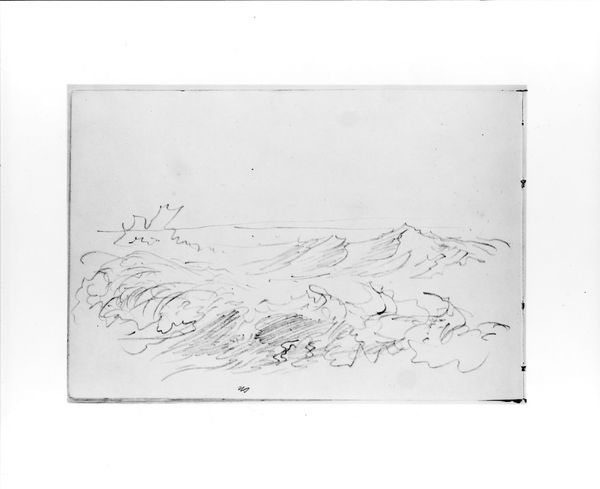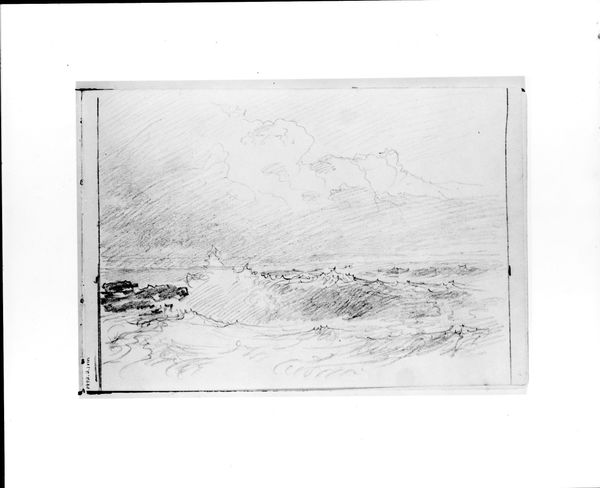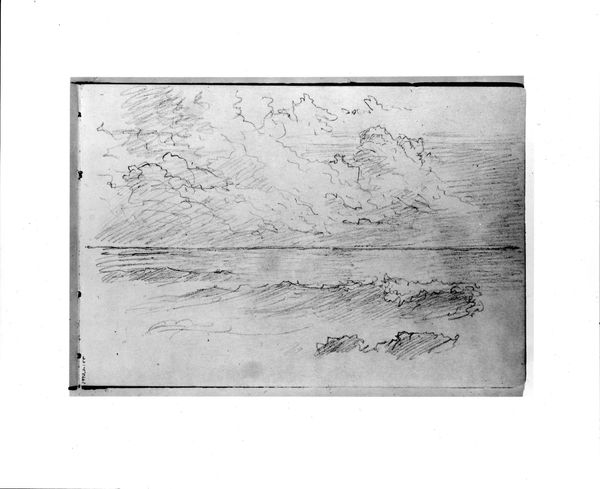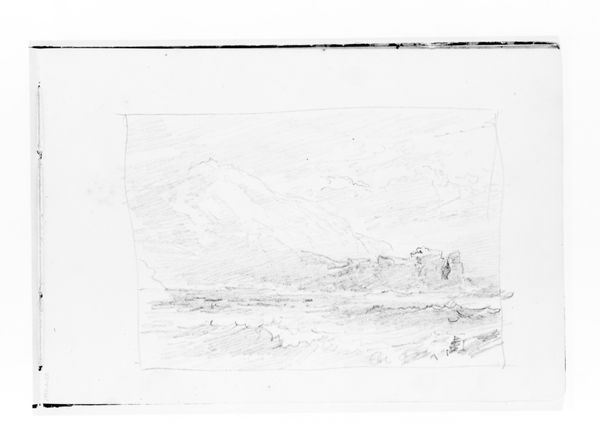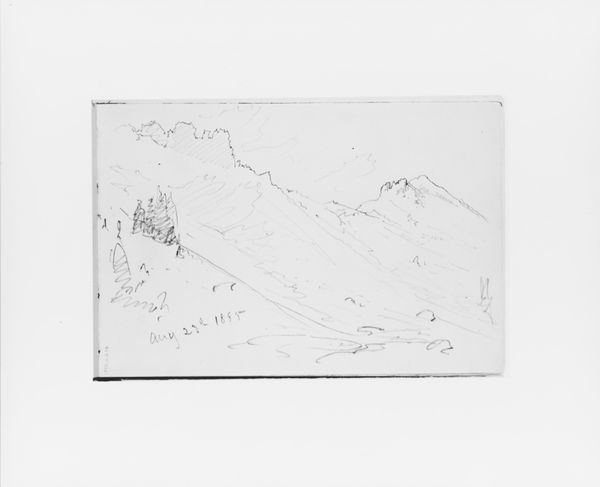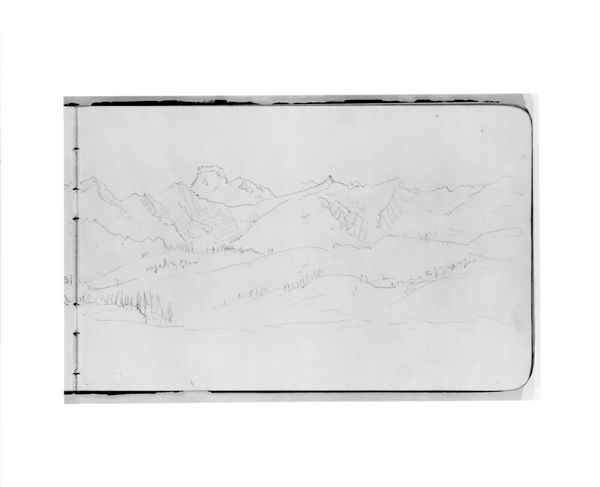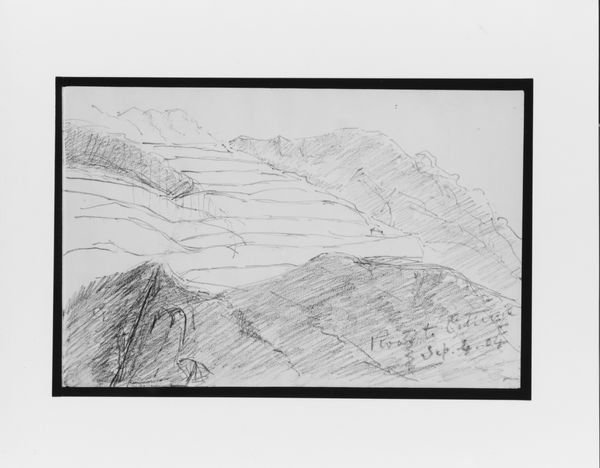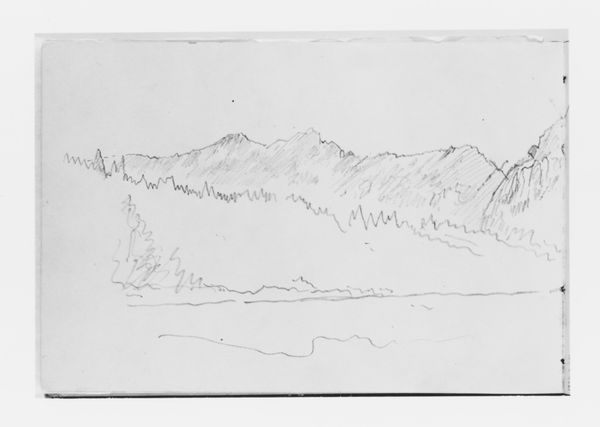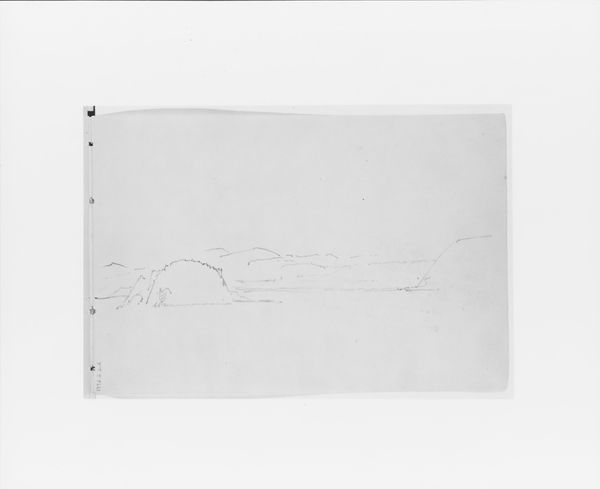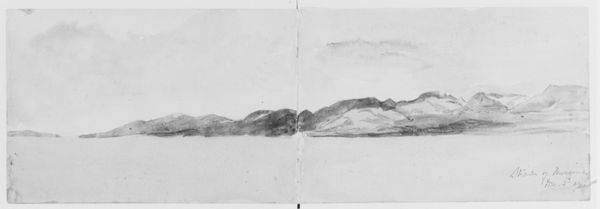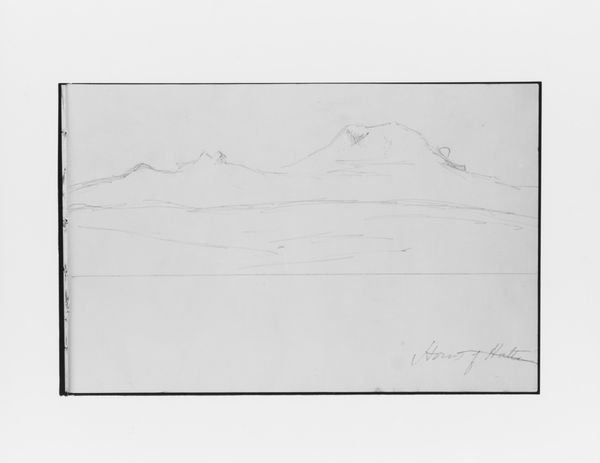
Waves Breaking in the Sea (from Sketchbook VII) 1886
0:00
0:00
drawing, ink, pencil
#
drawing
#
landscape
#
ink
#
pencil
#
monochrome
#
realism
#
monochrome
Dimensions: 5 x 7 1/2 in. (12.7 x 19.1 cm)
Copyright: Public Domain
Curator: This is William Trost Richards’ "Waves Breaking in the Sea" from 1886, currently held at the Metropolitan Museum of Art. It's a drawing done with ink and pencil. Editor: Immediately, the dynamism strikes me. Despite being monochrome, it’s full of motion—restless energy captured on paper. It feels almost…claustrophobic, paradoxically. Curator: Richards' coastal scenes are fascinating because he completed a considerable amount of studies. How does this tie to evolving views of leisure, wealth, and nature, which influenced art production at that time? This reminds me a little of how the Hudson River School used dramatic landscapes to articulate notions of Manifest Destiny, only through the lens of a much more restrained experience. Editor: I see your point, but I find the reduction in scale telling. Rather than epic vistas, it is close attention to the ocean and its moods, suggesting a fascination with natural processes rather than grand symbolic gestures. We could see this work, from a feminist perspective, as highlighting attention to the subtle but relentless work and power of women’s craft: weaving, drawing, storytelling. This ocean has tales to tell, not lands to conquer. Curator: It’s an interesting interpretation. However, one can understand that there’s not one sole purpose here. Perhaps he sought to reveal both the detailed workings and broad symbolic nature of the ocean, reflecting society's nuanced attitude toward industrial and creative processes during this period. Editor: Agreed. Its creation aligns with larger debates of women in art. Could it have served a similar function for landscape art during an era characterized by the commercialization and standardization of artistic production? Curator: Very well. The sketch feels both historically grounded and yet somehow speaks to enduring concerns. I appreciate you guiding us through its multilayered meanings! Editor: Thank you. I appreciate how thinking about gender and historical context helped shape a clearer interpretation for both of us.
Comments
No comments
Be the first to comment and join the conversation on the ultimate creative platform.

